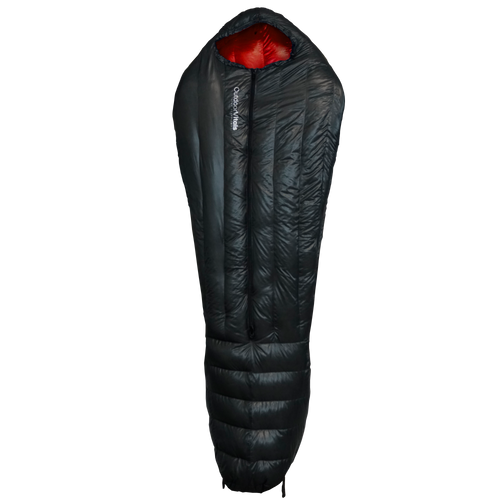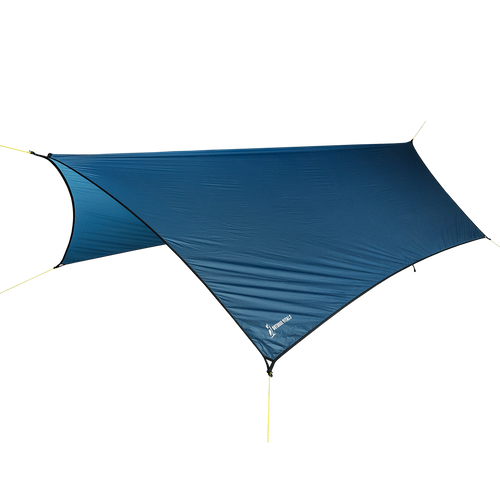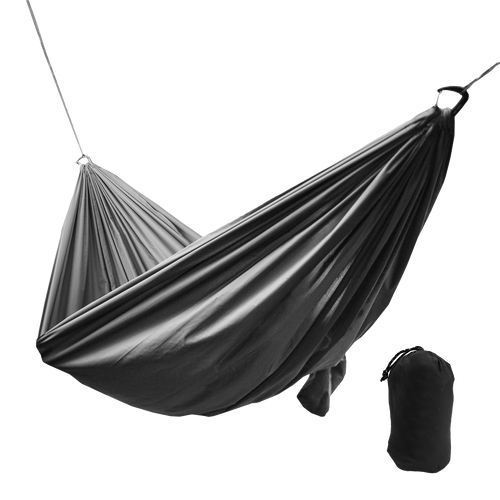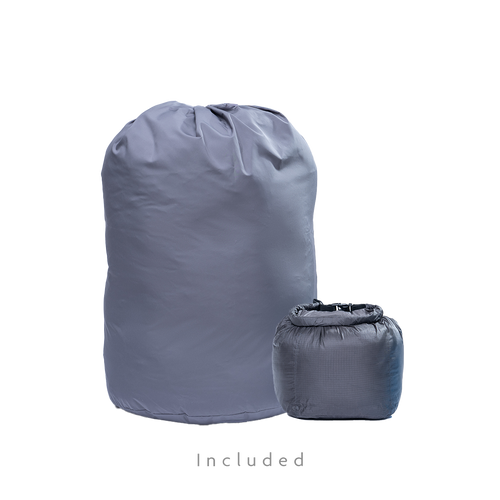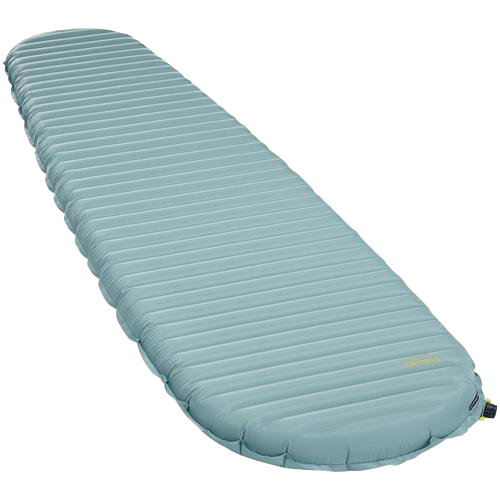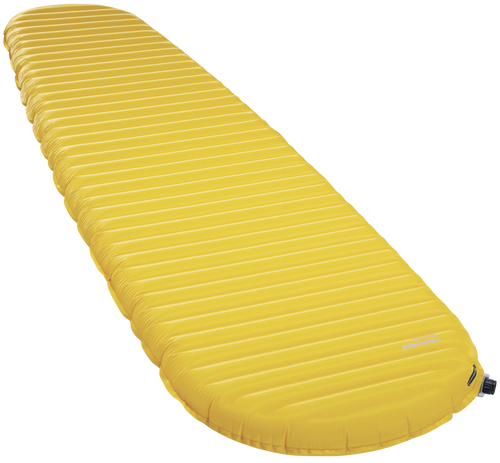LoftTek Insulation: Light, Compressible, and Insulates When Wet
A while back I was on a week-long canoe trip with some friends in the Southern Idaho region. We had packed our gear and food into our canoes and had taken off for a pretty wild adventure complete with rapids, waterfalls, and skunks in our campsites at night. My buddy and I had taken the lead canoe position while on a certain fast moving stretch of the river. We came to a calmer area after navigating through some rapids. Ahead there seemed to be what looked like more rapids coming up. As we got closer, we realized (too late) that what we had thought were more rapids was actually a small waterfall.
My friend and I called to each other to paddle hard and we made the attempt to reach the bank of the river before going over the waterfall. But those efforts only made it so we went off the waterfall sideways in the canoe instead of head-on. We plunged into the river with all our supplies, most of which we were able to fish back out of the water.
That same afternoon, we had another mishap with our canoe, and were again dumped into the river with all our gear to make a long story short.
Needless to say, we got soaked that day and lost a few items of our gear. We managed to salvage some things, such as our synthetic insulation sleeping bags. We tried to dry them out for the couple of hours left before dark, but they were still damp when the time came to sleep.
Even in a damp sleeping bag we still were able to keep warm.
Insulation can make a big difference in the outdoors when it comes to staying warm and dry. There are a couple different types of insulation on the market:
- Bonded insulation (synthetic)- comes in sheets. Keeps insulation together and spread uniformly. Works when wet, easier to take care of, cheaper, a little more breathable and forgiving of extreme temperatures because it doesn’t need coating.
- Down insulation: warmest weight to warmth ratio. Very compressible, more maintenance involved, can “wet out” or gets wet and collapses as insulation and doesn’t insulate. Even our StormLoft (DWR treated at the down level) has some risk of wetting out.
Where is the happy medium? Is there a product that can do the good things from both these types of insulation? That’s where loose-fill synthetics come in.
There are a number of different types of loose-fill synthetics that are basically trying to mimic down. They’re lightweight and compressible, but they have pros of synthetic insulation (insulate when wet, affordable, breathable, etc.) 
We’ve met with some of the most reputable insulation companies in the world to see what they have to offer. For a while didn’t find anything we quite liked. When there was something we were interested in, we would look at the gear companies that used that type of insulation and the products they made. After testing out some of these products we just weren’t quite satisfied with the performance of the insulation. Some insulations are a bit too clumpy, or have a variety of other issues.
We found something that actually works.
A few months back, we came across a great company to work with and were able to produce what we call LoftTek™ insulation. LoftTek™ insulation is the closest thing to down insulation we have ever seen without actually being down. All the individual plumes look just like plumes from down, and are amazing in mimicking down, especially in what we’ve tested.
 LoftTek™ insulation is a hollow-filament polyester fiber that’s about 2.5 denier, so it’s a very small fiber which also helps with its thermal efficiency. It’s actually been rated. We sent it in to the IDFL (International Down Laboratories for Testing), and they typically test down. However they tested our LoftTek™ as if it were down, and it rated as a 525 fill-power by them. Essentially LoftTek™ is rating as a little bit of a lower quality down, but retaining all the properties of a synthetic. The fibers have been siliconized so that as it comes in contact with water, the water won’t stick to it but kind of just drains out. This also makes it anti-static.
LoftTek™ insulation is a hollow-filament polyester fiber that’s about 2.5 denier, so it’s a very small fiber which also helps with its thermal efficiency. It’s actually been rated. We sent it in to the IDFL (International Down Laboratories for Testing), and they typically test down. However they tested our LoftTek™ as if it were down, and it rated as a 525 fill-power by them. Essentially LoftTek™ is rating as a little bit of a lower quality down, but retaining all the properties of a synthetic. The fibers have been siliconized so that as it comes in contact with water, the water won’t stick to it but kind of just drains out. This also makes it anti-static.
Why is the anti-static nature such a great thing? It makes the insulation more stable. One of the hardest parts of using a loose-fill synthetic insulation is stability. If it’s not stable enough, you have to sew it into tiny baffles, which brings in more opportunity for cold air to seep in on those baffles.
Here are some more pros of LoftTek™ insulation.
LoftTek™ is way more compressible than the bonded insulation. Those big sheets don’t compress down very well. It’s light like down, giving it a higher weight to warmth ratio than other synthetics. Unlike down, LoftTek™ remains warm when wet, and it dries a lot faster as well. It’s more breathable and doesn’t require down-proof coated fabric, which allows for more air movement. LoftTek™ is easier to wash and take care of than down.
Another pro for LoftTek™ is that it is not a byproduct of the meat industry. All of our down is responsibly sourced, meaning it is a byproduct of the meat industry and not acquired by live plucking, but LoftTek™ is completely synthetic and not related to the meat industry in any way.
Founder's Story Time:
Tayson was out hiking over the weekend and testing out one of our jacket prototypes that uses LoftTek™ insulation. It’s as warm as a down jacket, and is lightweight and compactable. Most of the day the weather was sunny and warm and Tayson was just packing the jacket. However the weather suddenly changed while he was up on the mountain and it started hailing and snowing. Tayson threw on the jacket and found that it heats and insulates like a down jacket.
 It ended up being a blizzard up there so some of the jacket insulation got “wetted out”. However, despite being wet, Tayson remained warm inside the jacket. The blizzard stopped about 45 minutes before he got back to his vehicle. During those 45 minutes, Tayson’s body heat basically pushed the moisture out of the jacket and he was almost dry by the time he got back to the vehicle.
It ended up being a blizzard up there so some of the jacket insulation got “wetted out”. However, despite being wet, Tayson remained warm inside the jacket. The blizzard stopped about 45 minutes before he got back to his vehicle. During those 45 minutes, Tayson’s body heat basically pushed the moisture out of the jacket and he was almost dry by the time he got back to the vehicle.
In this instance you can kind of see how LoftTek™ gives you the benefits of both a synthetic and down insulation.
We are really excited about LoftTek™ and will be using it in some of our upcoming products we are developing. Stay tuned for more info on those, and we hope to see you all on the trail!

